microVM Containers: The best of both worlds
Minimal design of virtual machines integrated with Containers and why
Created by Alejandro Escanero Blanco / Twitter: @aescanero Documentation and Demo in https://github.com/aescanero/dockerevents/opensouthcode2019 Slides in Disasterproject
Containers
What is a container?
It is a process that runs isolated in its own memory space, CPU, I / O and network
In linux there are two characteristics are used for it: Namespaces and Cgroups
There are a lot of implementations in the market: Docker, LXC ...

Source: What even is a container: namespaces and cgroups
Source: Cgroups, namespaces, and beyond: what are containers made from?
How does Docker to run a container?
A client (eg Docker CLI) calls the Dockerd service using the Docker API
Dockerd performs the management of the API, orchestration and communications, delegating container life cycle functions to Containerd
Containerd performs the functions of volume, network, images management and container life cycle
Finally RunC executes the container
Source: Docker components explained
How does Kubernetes to run a container?
A client calls the ApiServer service using the Kubernetes API
Kubernetes takes decision over the node on which will be executed the POD and calls the agent (Kubelet) that runs on it
The Kubelet uses the Container Runtime Interface to communicate with the containers lifecycle manager
How does Kubernetes to run a container? (2/2)
Containerd Shim v2 is a translation layer between CRI and Containerd, currently there is CRI-Containerd that supports CRI directly
There are others CRI compatible implementations such as CRI-O used in Openshift
Finally RunC executes the container
Source: Containerd Plugin for Kubernetes Container Runtime Interface
Source: Open Container Initiative-based implementation of Kubernetes Container Runtime Interface
Container standards to be considered for MicroVMs
CRI (Container Runtime Interface): A unified Kubelet access interface to the "Container Runtime"
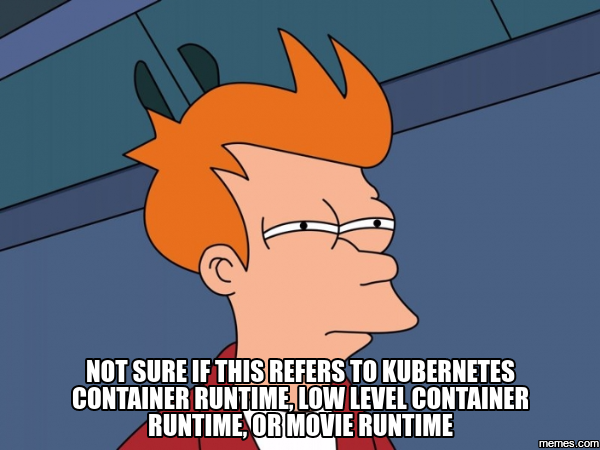
CRI uses two other technologies: gRPC, project incubated in the CNCF (Cloud Native Computing Foundation) to connect the services and Protobuff for the serialization of data
Source: Container Runtime Interface (CRI)
Source: High performance, open-source universal RPC framework
Source: Language-neutral, platform-neutral extensible mechanism for serializing structured data
Container standards to be considered for MicroVMs (2/2)
The container standards over execution are managed by the Open Container Initiative, a Linux Foundation proyect which has two specifications
OCI runtime specification: Defines how the execution environment, configuration and container lifecycle must be
OCI image format specification: Defines configuration, layers and manifest of an image should be, the objective of both standards is that any tool that works with containers can use the images generated by any other.
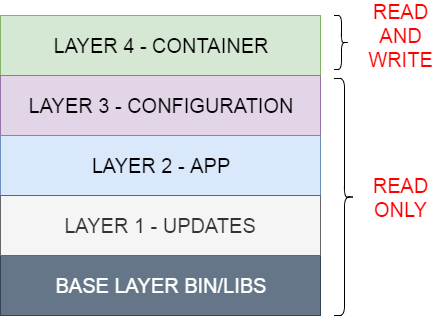
Source: Open Container Initiative
Source: Configuration, execution environment, and lifecycle of a container
Source: Image Format Specification
Virtual machines
What is a virtual machine?
In Computing, virtualization is the creation through software of a virtual version of some technological resource
A Hypervisor is a manager and monitor of such virtualized resources
A virtual machine is a virtualized resource consisting of a virtual hardware and an operating system

Source: Virtualization
Performance and Security
Why should we use containers?
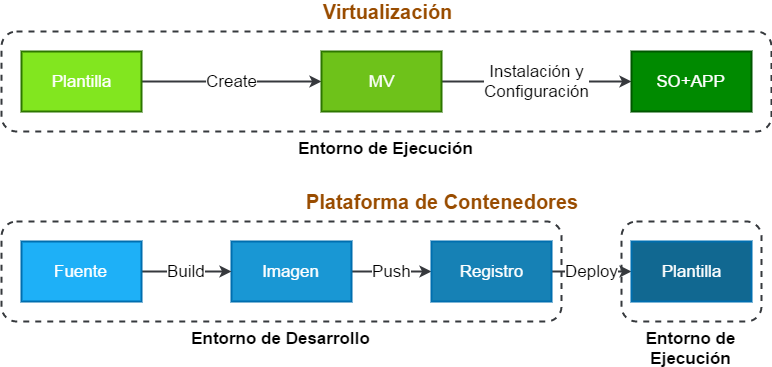
The market tends to use containers for their shorter time to deploy because donb't need the isolation layer and OS of a MV
Do not require intervention from the infrastructure department, although this process is reduced with the usage of configuration management tools
It is not required to enter the OS to install or prepare
Why should we use virtual machines?
A malicious attacker can use a vulnerability in runC or/and kernel to access information that exists in other containers
For large service providers this is a big problem because they must ensure that the information of any company is isolated from the rest
Therefore they need systems that improve security by isolation
STRIDE threat model
Spoofing Identity: A malicious attacker could be shown as an authorized user of the system
Tampering with Data: A malicious attacker could add, modify or delete information
Repudiation: A malicious attacker could eliminate or make impossible to demonstrate the attack
Information disclosure: A malicious attacker could access privileged information
Denial of Service: A malicious attacker could make the service unavailable
Elevation of privilege: A malicious attacker could escalate their privileges
Authenticity
Integrity
No repudiation
Confidentiality
Availability
Authorization
Options to improve container security

There are basically two proposals to reduce the security problem of containers
The first is based on reducing the vulnerable surface of containers
Filtering system calls made by containers with solutions like gVisor
Or by applying linux kernel security modules such as SeLinux
However, we are going to talk about a second option: Strong isolation with MicroVMs
Source: OWASP Container Security Verification Standard
Source: How to stop worrying about Application Container Security
MicroVMs OpenSource solutions
microVMs and UniKernels

UniKernels are specialized Kernels that have the minimum libraries to perform the function for which they are created
There have been Unikernels for more than five years like MirageOs (based on Ocaml), Unik (that despite being experimental has an important activity)
If we create a Unikernel and assign as function execute the virtualization drivers, an agent for the hypervisor or manager and the ability to lift a container, we obtain a MicroVM
MicroVMs are specialized and not general use case, this leads to reduce drivers and libraries to fit with the hypervisor where they will be executed, significantly reducing their size and deployment times
Source: Unikernels: The Rise of the Virtual Library Operating System
Source: MirageOS is a library operating system that constructs unikernels
Source: The Unikernel & MicroVM Compilation and Deployment Platform
Source: Unik Slides
Kata Containers

Kata Containers comes from the union of two products: Intel Clear Containers and Hyper.s
Currently Kata Containers is a project within the OpenStack Foundation
Kata Containers is a "Container Runtime" compatible with OCI runtime specification so it can work with Docker or Kubernetes via CRI with CRI-O or CRI-Containerd
Kata Containers creates a virtual machine with QEMU / KVM for each container or pod
For best results, Kata Containers develop a reduced QEMU version called qemu-lite which have a minimum hypervisor layer adjusted to the kernel
Source: Intel® Clear Containers: Now part of Kata Containers
Source: Kata Containers
Kata Containers (2/2)
Kata Containers passes to the hypervisor a kernel to boot the MV with the minimum services to run a container
The Hypervisor starts a with a minimal OS image using the indicated Kernel
Systemd executes kata-agent and this will execute a new context where to execute the command
For this, kata-agent makes use of libcontainer (it works as if it were runC)
Kata Containers integrates in OpenStack within the framework OpenStack Zun to show containers as OpenStack MVs and take advantage of the features of the platform such as SDS (Software Defined Storage) and SDN (Software Defined Network) among many others
Source: Kata Containers Architecture
Source: A Go package for building hardware virtualized container runtimes
FireCracker

Firecracker is an Amazon AWS project recently released as free software for the creation of secure containers in multitenant environments
Firecracker is a minimal hypervisor that works over KVM (qemu-lite style) used in AWS solutions: Fargate (CaaS) and Lambda (FaaS)
Its device model is even smaller than qemu-lite device model and owns minimal SO image uses vsock for firecracker-agent communication, to raise the containers use runC
Source: Firecracker
Source: virtio-vsock
VMware VIC
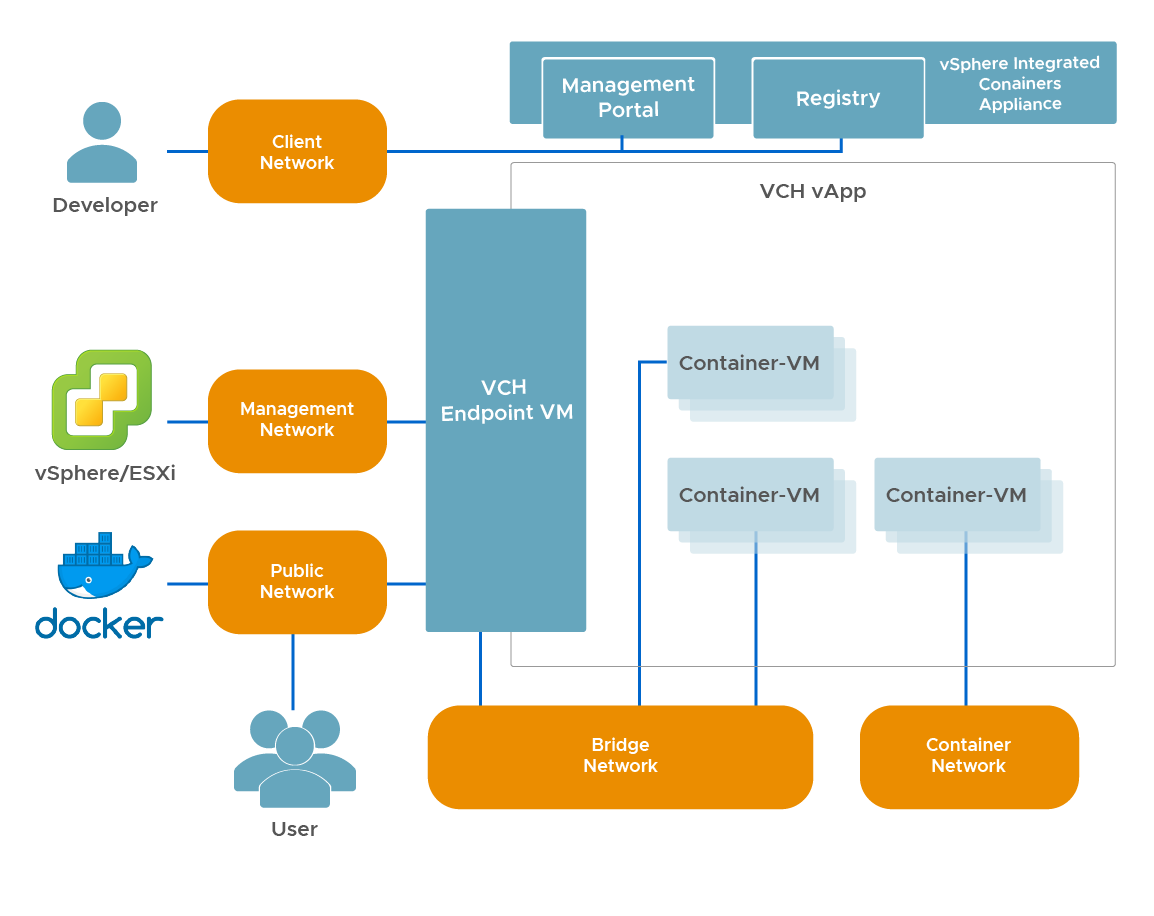
vSphere Integrated Container is a multiple opensource components pack under Apache 2 license. These components are integrated into a single product (vic-product)
It is a compatible docker enginer (client versions 1.13 and API 1.25), and it is integrated directly into vSphere hypervisors, creating containers as virtual machines
This lets you to use the storage resources (datastores, vSAN) and network (dVswitch, NSX) of the VMware platform
VMware VIC Elements
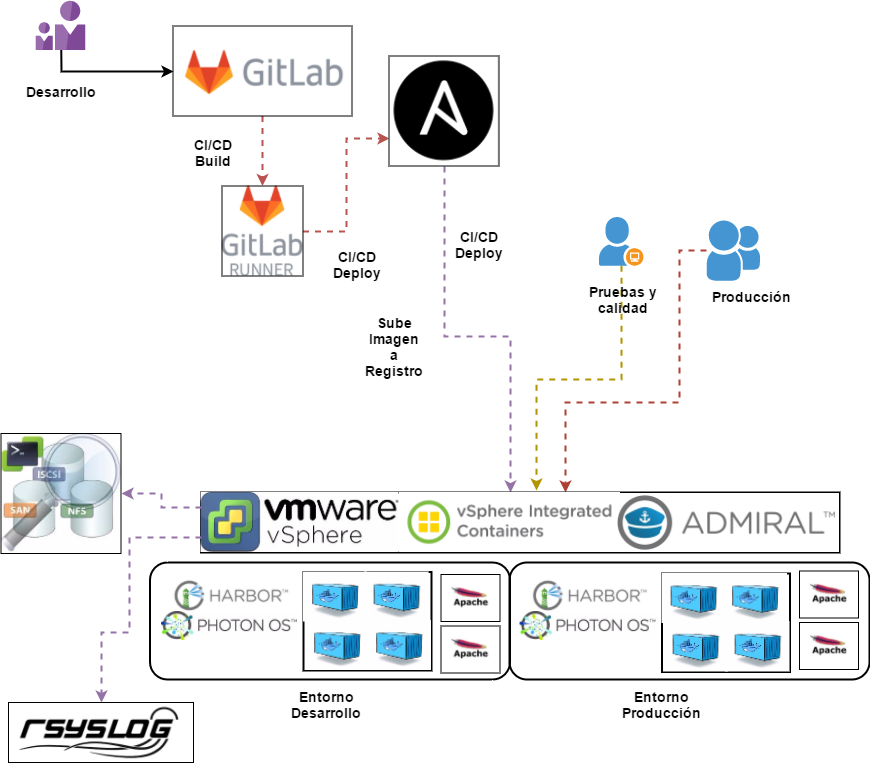
The solution integrates a Container Registry (Harbor)
A multitenant Portal (Admiral)
A connector to manage VCHs from vCenter (vSphere plugin)
End Points that speak docker (VCH) or virtual machines (Photon OS) with pre-installed docker
Source: Admiral
Source: Photon OS
microVM Containers: The best of both worlds
Minimal design of virtual machines integrated with Containers and why
Created by Alejandro Escanero Blanco / Twitter: @aescanero Documentation and Demo in https://github.com/aescanero/dockerevents/opensouthcode2019 Slides in Disasterproject